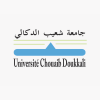Water management
"Planned development, distribution and use of water resources." (United Nations Publications, 2013)
United Nations Publications. "Glossary of Shared Water Resources (English-Arabic): Technical, Socioeconomic and Legal Terminology." (2013). DOI:https://dx.doi.org/10.18356/70b462ce-en
Related Content
Article
Acuaporinas: la lucha contra la crisis mundial del agua utilizando el propio filtro de la naturaleza
Exploring the exciting potential of hyperspectral imaging for water quality monitoring
Harmful Algal Blooms occur when toxin-producing algae experience excessive growth within bodies of water. These blooms have the potential to cause detrimental effects on both aquatic and human health and can sometimes even cause death, depending on the type of algae involved (NIEHS, 2021). Thanks to the use of space-based remote sensing technology to monitor water quality conditions in coastal areas and drinking water reservoirs, nations are becoming more aware of the quality of their water.
Acuaporinas: la lucha contra la crisis mundial del agua utilizando el propio filtro de la naturaleza
基于数字孪生的现实条件海平面上升模拟
Translated by Dr. Mengyi Jin
数字孪生技术正越来越多地应用于模拟海平面上升所带来的影响,为城市规划、海岸管理和灾害应对等领域的决策者提供了宝贵的工具。这些虚拟模型整合了包括地理空间影像、人工智能和环境监测系统等不同来源的实时数据,可以详细模拟海平面上升对特定区域产生的影响。
通过准确绘制当前的土地覆盖特征,并不断用新数据更新这些模型,数字孪生使研究人员和政府部门能够在不同的气候变化条件下对未来的情景进行预测。这有助于识别脆弱区域、规划基础防护设施以及优化疏散策略。例如,高分辨率地理空间数据可以显示哪些区域面临洪水风险,而由人工智能驱动的模拟则可以预测海平面上升可能对当地生态系统和城市环境产生的长期影响。
通过将海平面上升纳入数字孪生模拟,城市规划者和环境科学家可以充分了解其对沿海地区的长期影响,从而为气候变化带来的挑战做好更加充分的准备。这项技术对于直观呈现和科学规划适应性应对措施,从而减缓海平面上升可能造成的损害具有重要意义。
Exploring the exciting potential of hyperspectral imaging for water quality monitoring
Harmful Algal Blooms occur when toxin-producing algae experience excessive growth within bodies of water. These blooms have the potential to cause detrimental effects on both aquatic and human health and can sometimes even cause death, depending on the type of algae involved (NIEHS, 2021). Thanks to the use of space-based remote sensing technology to monitor water quality conditions in coastal areas and drinking water reservoirs, nations are becoming more aware of the quality of their water.
Acuaporinas: la lucha contra la crisis mundial del agua utilizando el propio filtro de la naturaleza
遥感技术在水敏感城市设计中的应用
Translated by Dr. Mengyi Jin
引言
随着城市化的快速推进,城市水环境正面临前所未有的挑战 (Chen et al. 2015)。城市地表不透水面的持续扩张削弱了自然雨水循环,导致降雨径流迅速汇集,增加了内涝发生的频率,也降低了雨水对地下水的补给能力。同时,水体污染以及城市热岛效应的加剧,进一步暴露出传统城市规划对水文系统适应性的不足。在气候变化背景下,极端降雨、干旱等事件的发生频率和强度不断上升,这些现象正严峻考验着城市对水资源的调蓄、排涝、净化和生态恢复等能力。
在这个背景下,水敏感城市设计(Water Sensitive Urban Design, WSUD)作为一种新型城市发展模式被广泛关注。与“低影响开发”(Low Impact Development, LID)理念相似, 水敏感城市设计强调模拟自然水循环过程,并提升城市应对水资源相关挑战的韧性。其核心目标在于将水资源视为城市系统中不可或缺的组成部分,通过系统性地管理水的收集、输送、处理与储存过程,实现其生态功能与社会功能的有机融合(Wong 2006)。
Capacity Building and Training Material
Event
INBO WEBINAR From ground to orbit: combining in-situ and satellite monitoring of water to improve basin management

The webinar will take place on 22 April 2025 at 15:00 (CET) via Zoom. It is co-organised by International Network of Basin Organizations (INBO), Centre National d’Etudes Spatiales (CNES), World Meteorological Organization (WMO) in partnership with National Research Institute for Agriculture, Food and Environment (INRAE).
United Nations/Costa Rica/PSIPW - Sixth conference on the use of space technology for water management
San José, Costa Rica, 7-10 May 2024 (with a possibility of online attendance) - streaming in UTC-8 time zone.
Hosted and supported by the Inter-American Institute for Cooperation on Agriculture (IICA)
Co-sponsored by the Prince Sultan Bin Abdulaziz International Prize for Water (PSIPW)
Water Market Europe 2025

The European Green Deal sets a bold ambition: achieving climate neutrality and establishing a circular economy by 2050. Central to this vision is the integration of Nature-based Solutions (NbS) in urban water management, which promotes sustainability while addressing pressing environmental challenges. The MULTISOURCE project is at the forefront of this movement, developing innovative models for urban wastewater treatment through NbS.
Local Perspectives Case Studies
Stakeholder
Université Chouaib Doukkali
The Chouaib Doukkali University (CDU) [www.ucd.ac.ma] in El Jadida, Morocco was founded in 1985. It is a public institution of higher education and scientific research. At present, in the Chouaib Doukkali there are 6 faculties, and has more than 507 teachers, 255 administrators, and more than 25 000 students. Training is provided for bachelor degree and master degree. In terms of research, the University has established two centers for doctoral studies, with 25 laboratories involving 82 research teams.
Person

Arjen Haag
Researcher / Consultant Hydrology and Water Management Deltares
Arjen is interested in the physical processes that shape our surroundings, especially the flow of water, and the proper management of our natural resources. He is a hydrologist and remote sensing analyst with a special interest in understanding high river discharges and floods. He combines hydrological knowledge with modelling, data-driven approaches and satellite observations, on topics ranging from water resource management to flood forecasting.














































